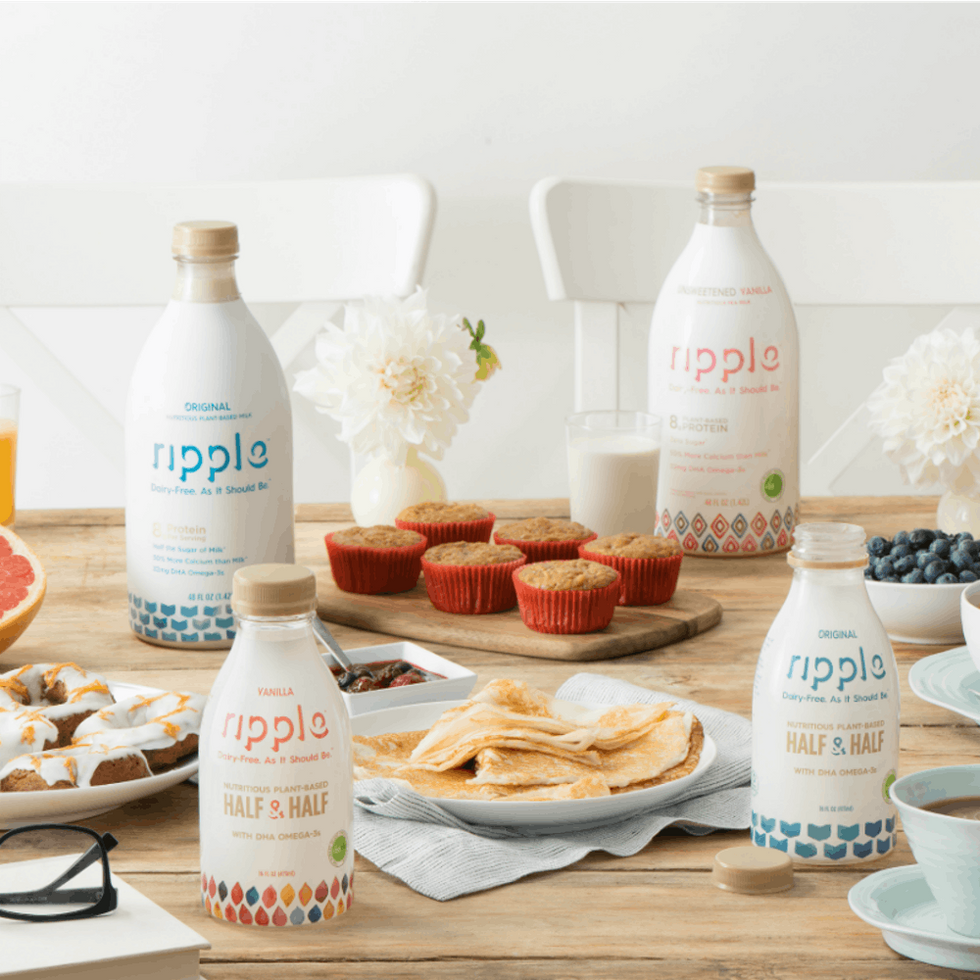Got (pea) milk?
Ripple Is Making Waves With Its Tasty, Protein-Rich Pea Milk


For many of us, 2017 was a doozy, but we here at Brit + Co are ready to hit refresh in 2018! Follow our Hit Refresh series through January for new ideas, hacks, and skills that will help you achieve (and maintain!) those New Year’s resolutions.
Ripple, a nutritious milk made of yellow peas, isn’t just yummy — it’s packed with protein and is exactly what every other alternative milk is striving to be. There’s no doubt you’ve been exposed to the abundance of non-dairy milk options lined up at the supermarket. Unless you’ve been making your own, you’ve probably spent too much time hemming and hawing at the different varieties. (Almond? Coconut? Hemp?). Ripple is about to make this decision a heck of a lot easier.

A little pea packs a big punch
Ripple co-founders Neil Renninger and Adam Lowry made it their mission to offer something that was way more nutritious and delicious than dairy-free milks currently on the market. The creation of Ripptein, a pea protein, helped them find success. “Peas are an excellent source of protein,” says Renninger. “Ripple milk is packed with eight grams of plant-based protein per serving, which is identical to dairy milk. It has fewer calories than dairy milk, and is creamy and smooth in flavor, making it a perfect replacement for dairy, soy, or nut milks.” It can even be used in baking! Lowry adds, “The protein naturally found in peas helps you stay full between meals, and peas are easily digested and non-allergenic.”
Brit + Co’s food editor, Anna Monette Roberts, is a huge fan of Ripple milk, especially the unsweetened original flavor, and can attest that Ripple really does have the tasty drinkability and velvety mouthfeel of regular cow’s milk with the added bonuses of it being high in protein and plant-based. The chocolate variety is a close second, and makes for an insanely delicious mocha or post-workout snack.

the ripple effect on our planet
Ripple isn’t just good for our bods, it’s good for our planet too because peas use much less water than dairy and almonds. Named after the “ripple effect,” this good stuff was created on the belief that sustainability should be effortless and that the foods we eat and the products we buy should have sustainability built-in. “It takes 1,000 gallons of water to make just one gallon of milk, and 1.1 gallons of water to make a single almond,” explains Renninger. “Overall, with water scarcity taken into account, growing almonds takes 100 times more water than peas; dairy milk takes 25 times more water than Ripple.” If you’ve ever doubted your contribution to the planet’s well-being, Lowry will reassure you. “We believe that even the smallest actions can have far-reaching impacts; that even the simple choice of what’s for breakfast can bring about a healthier you and a greener world.”

Let your love for ripple flow
When we find a dairy alternative we love, we want it every which way we can get it. Ripple gets this, and they’ve got the plans to prove it. “Americans are increasingly conscious about the food we put in our bodies, and as people continue to adopt a dairy-free lifestyle or are looking to reduce their dairy consumption, we want to make sure they have delicious and nutritious options,” says Renninger. After all, we shouldn’t have to sacrifice taste for health. Ripple promises us many more pea-protein products in the future. For now, we can indulge in their pea milk, Greek yogurt, and half-and-half cream. (High five, coffee lovers!)
Have you tried Ripple? What are your thoughts? Tweet us @BritandCo!
(Photos via Ripple)


















